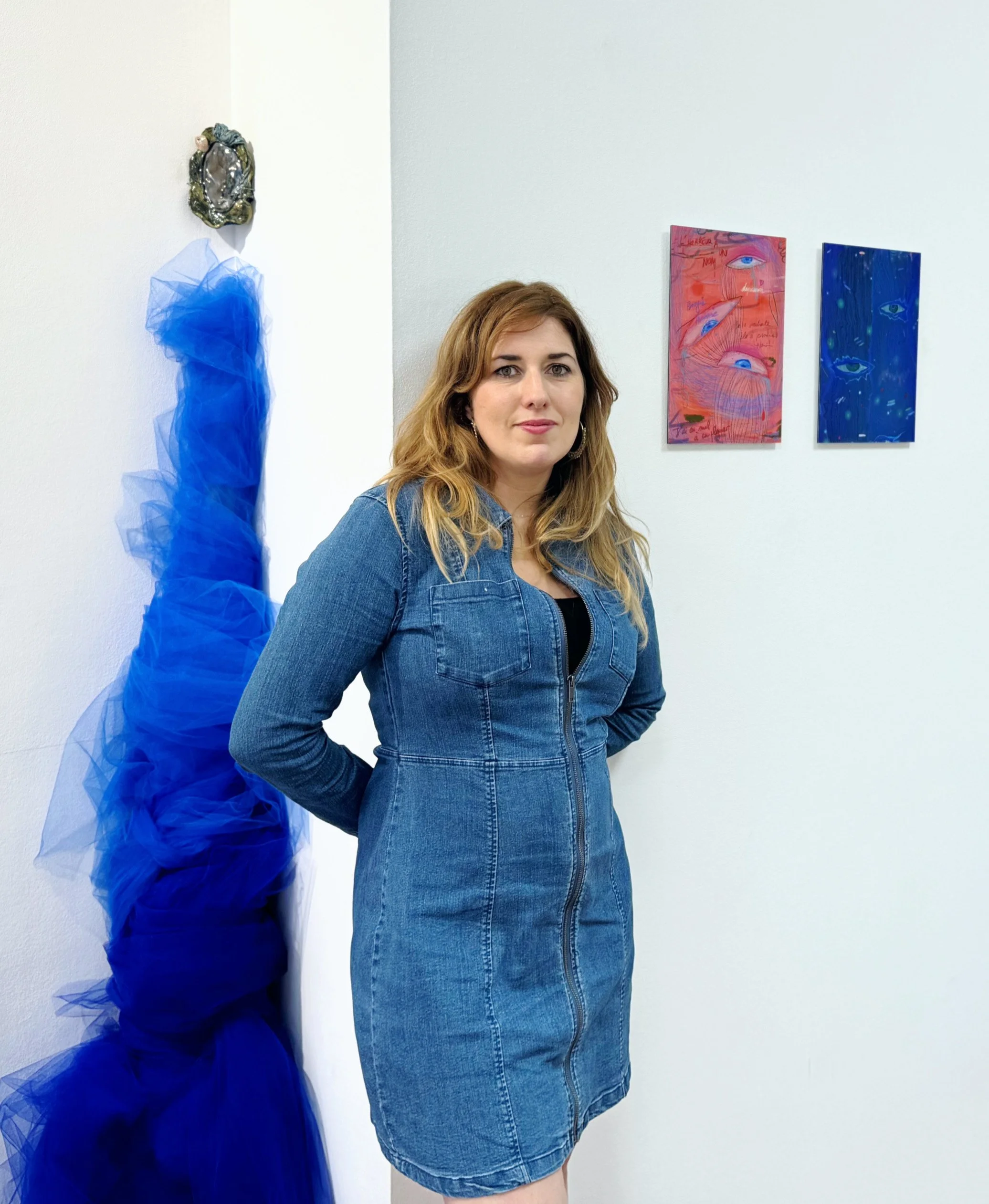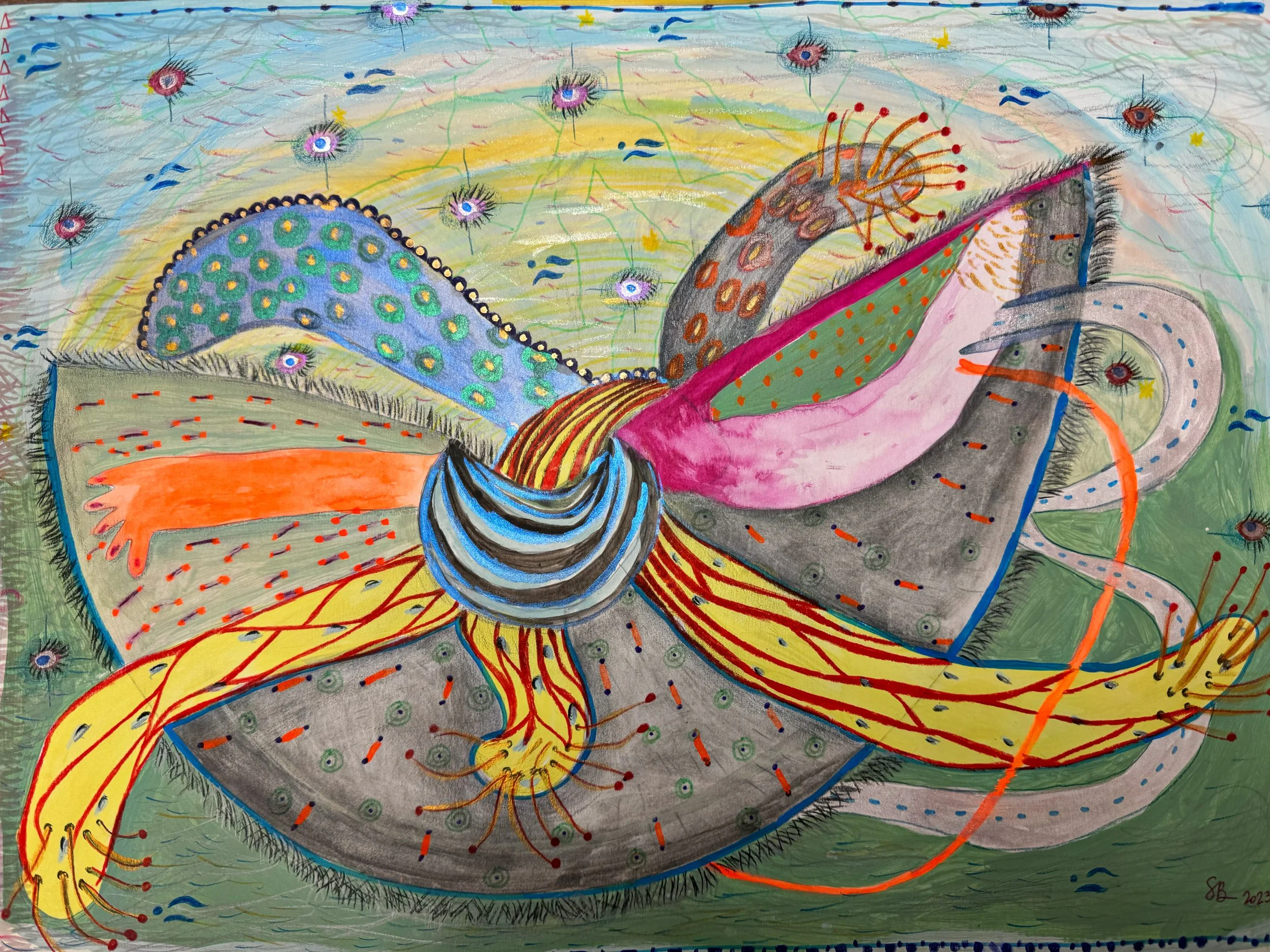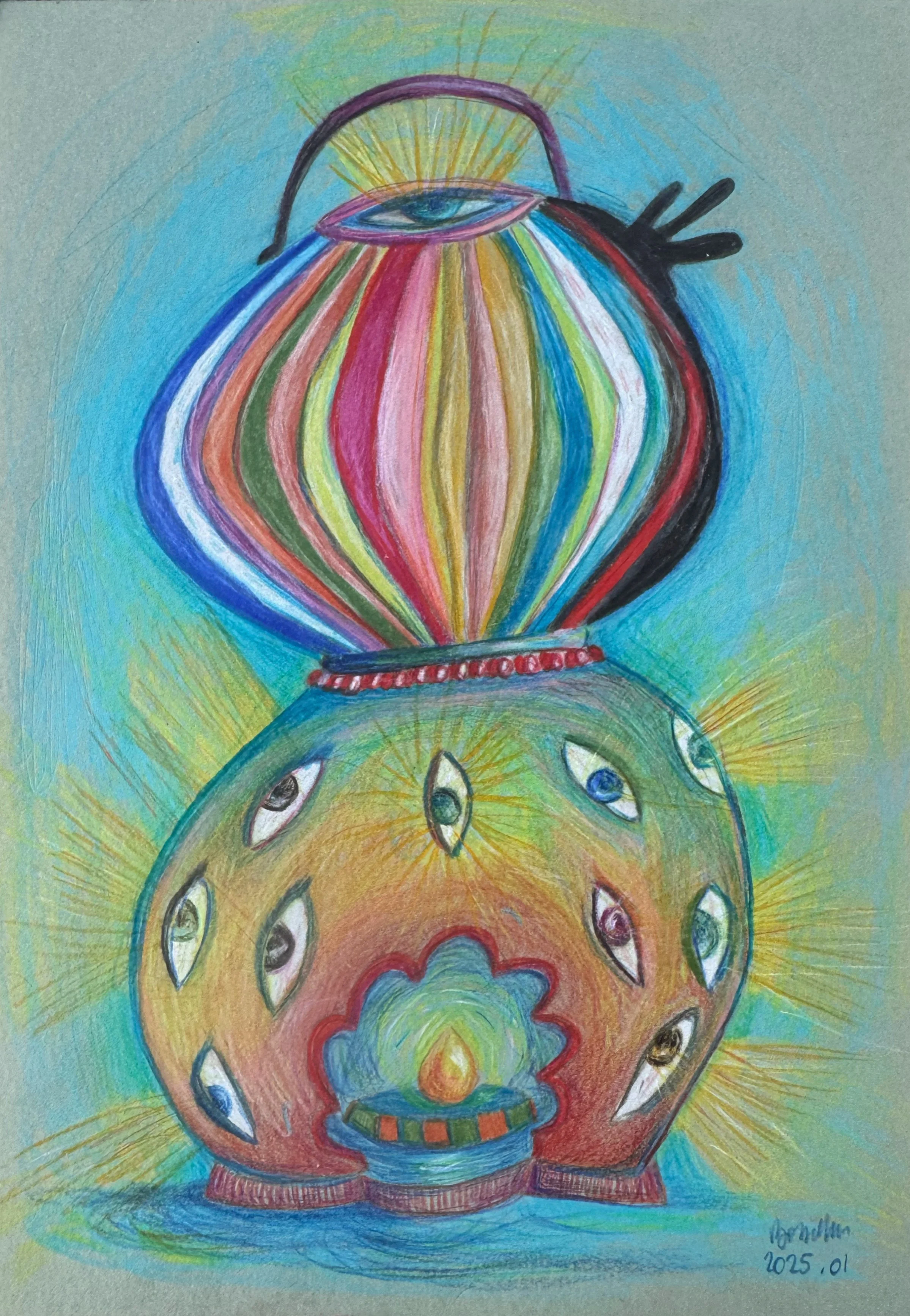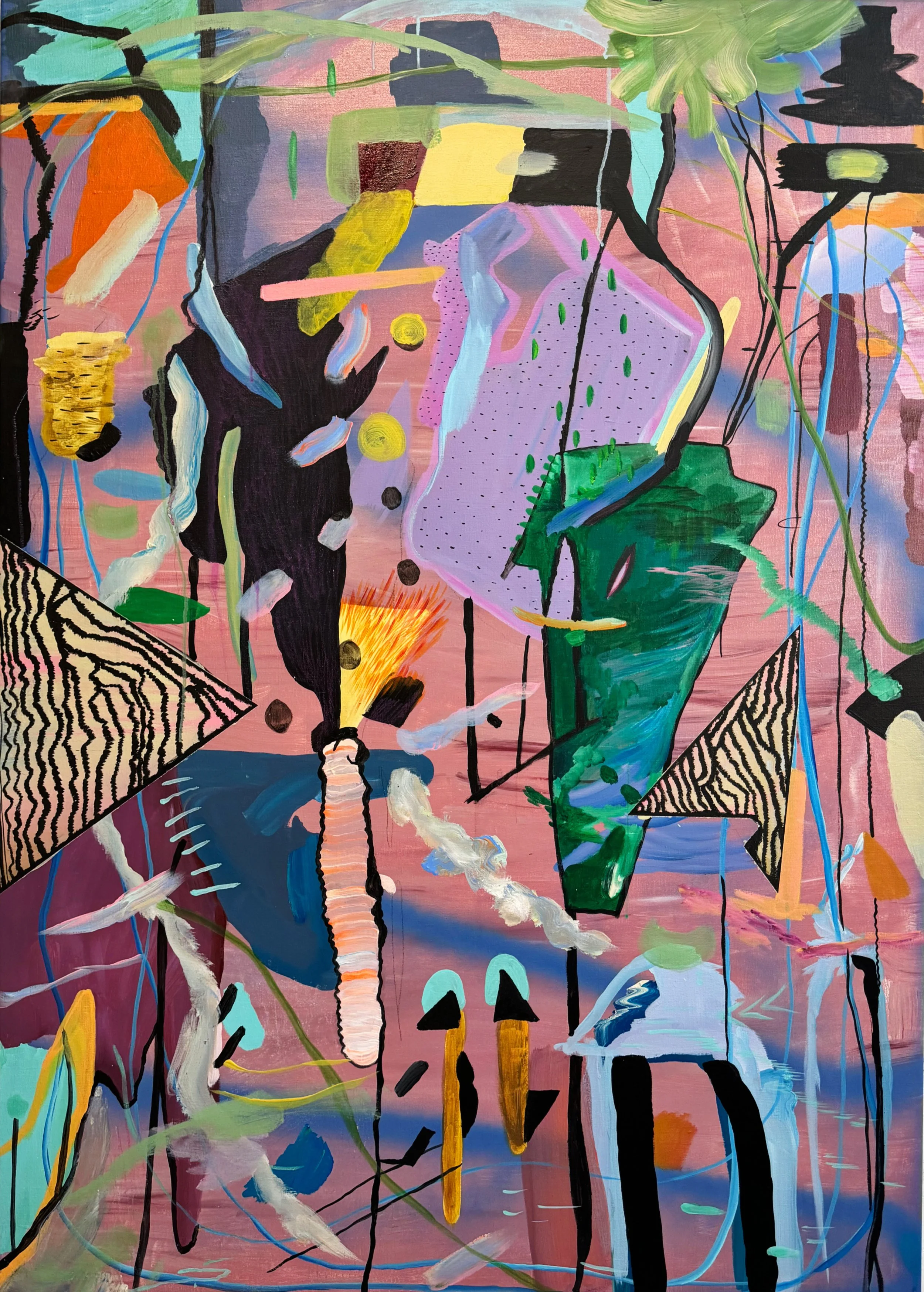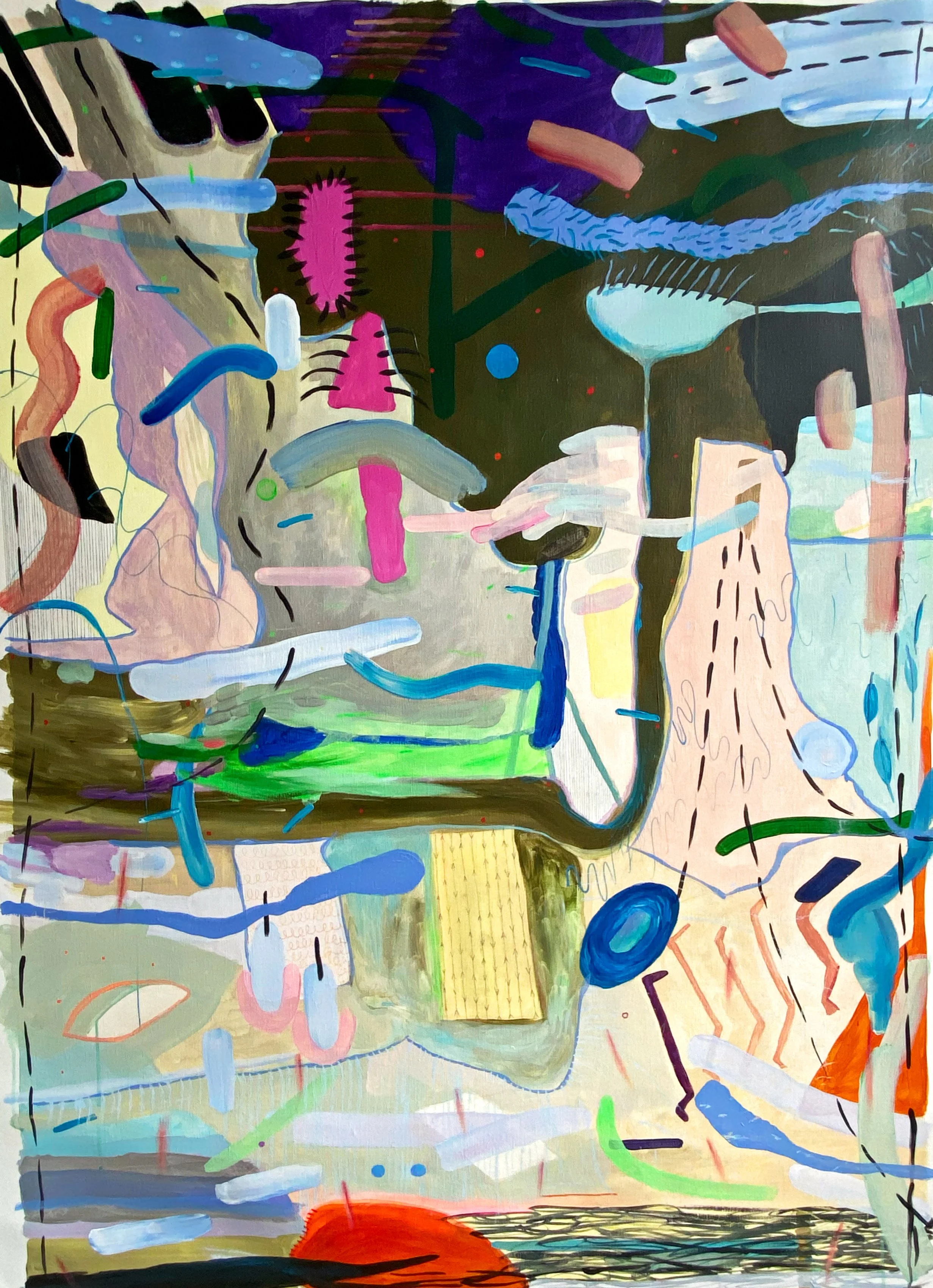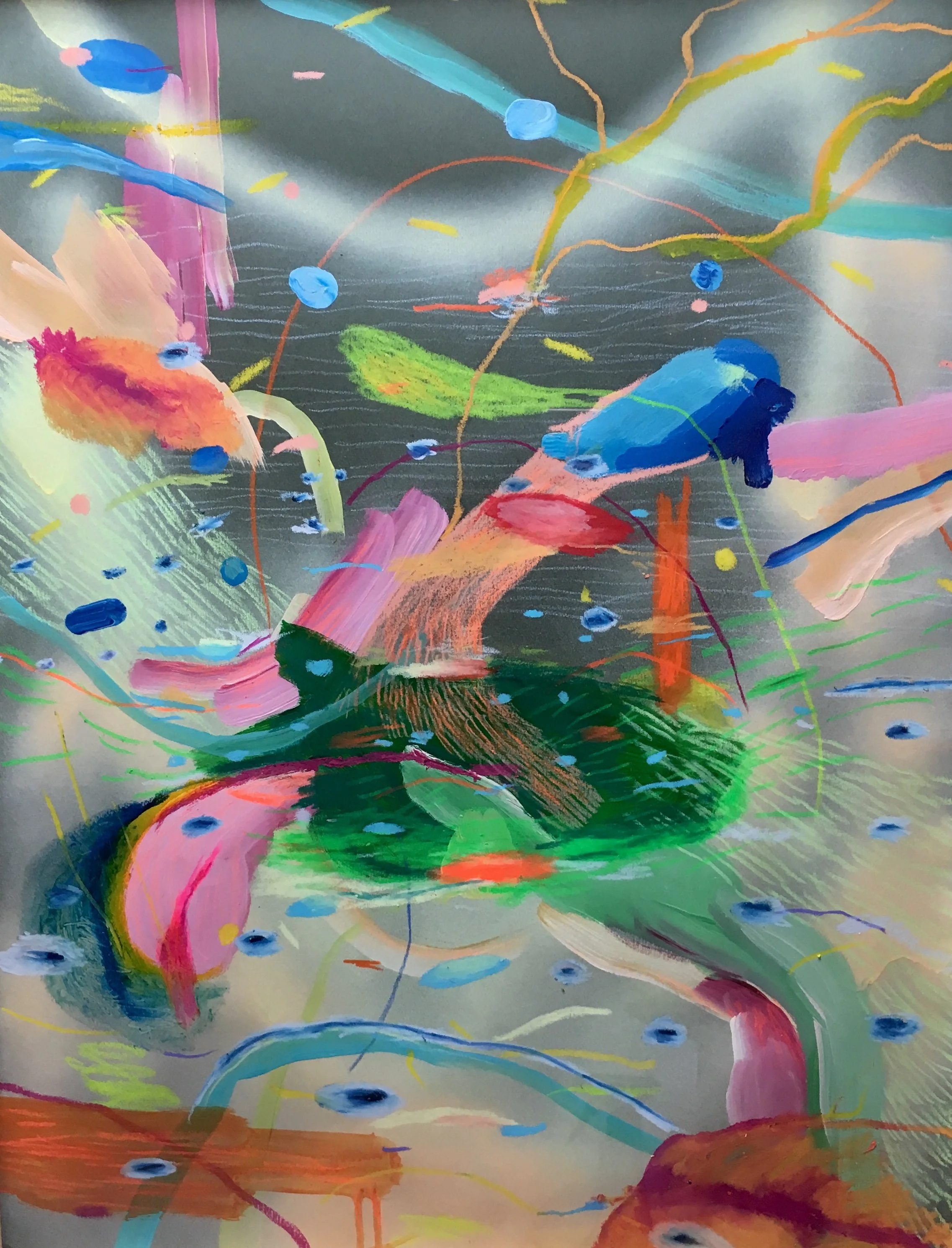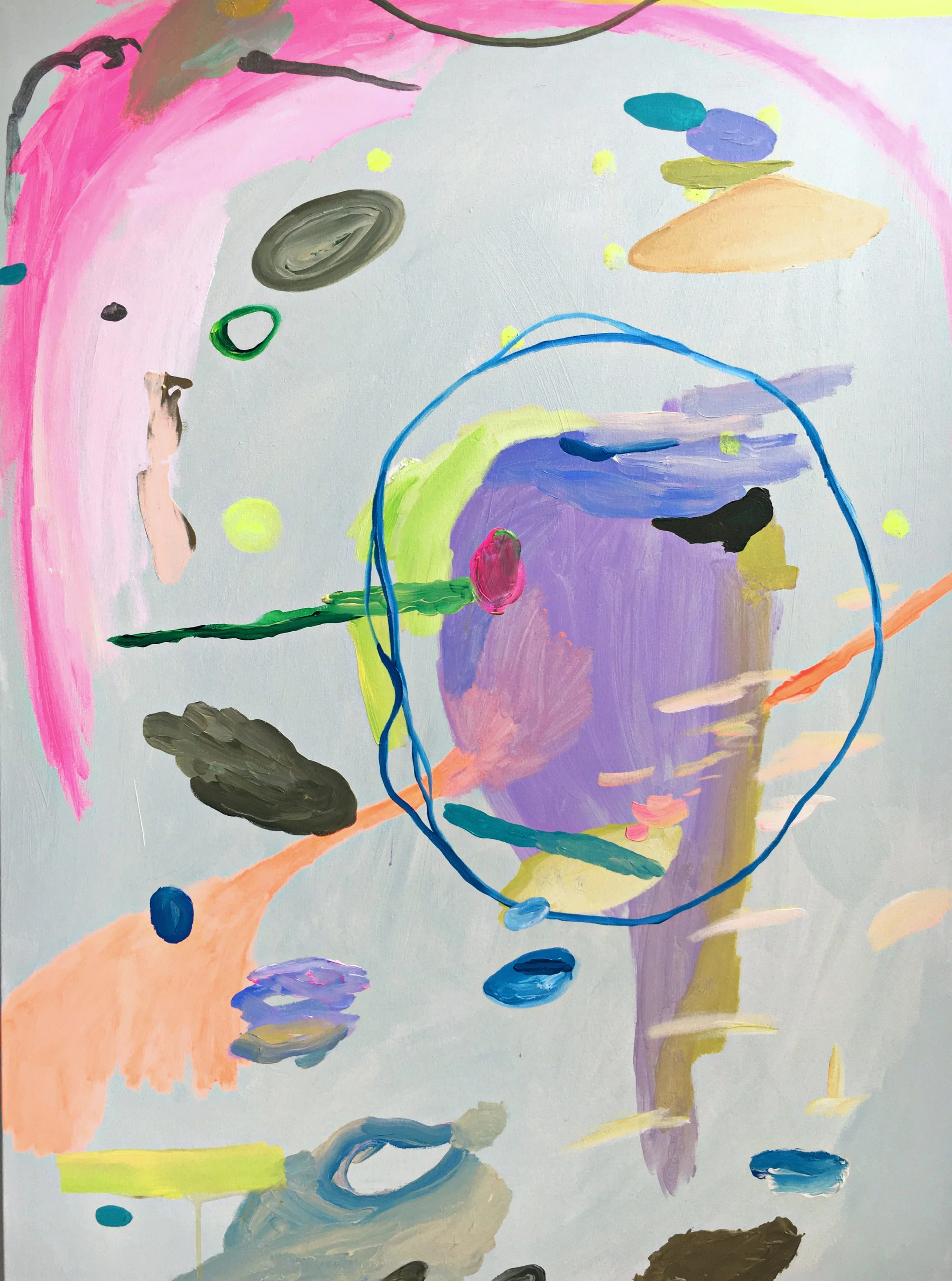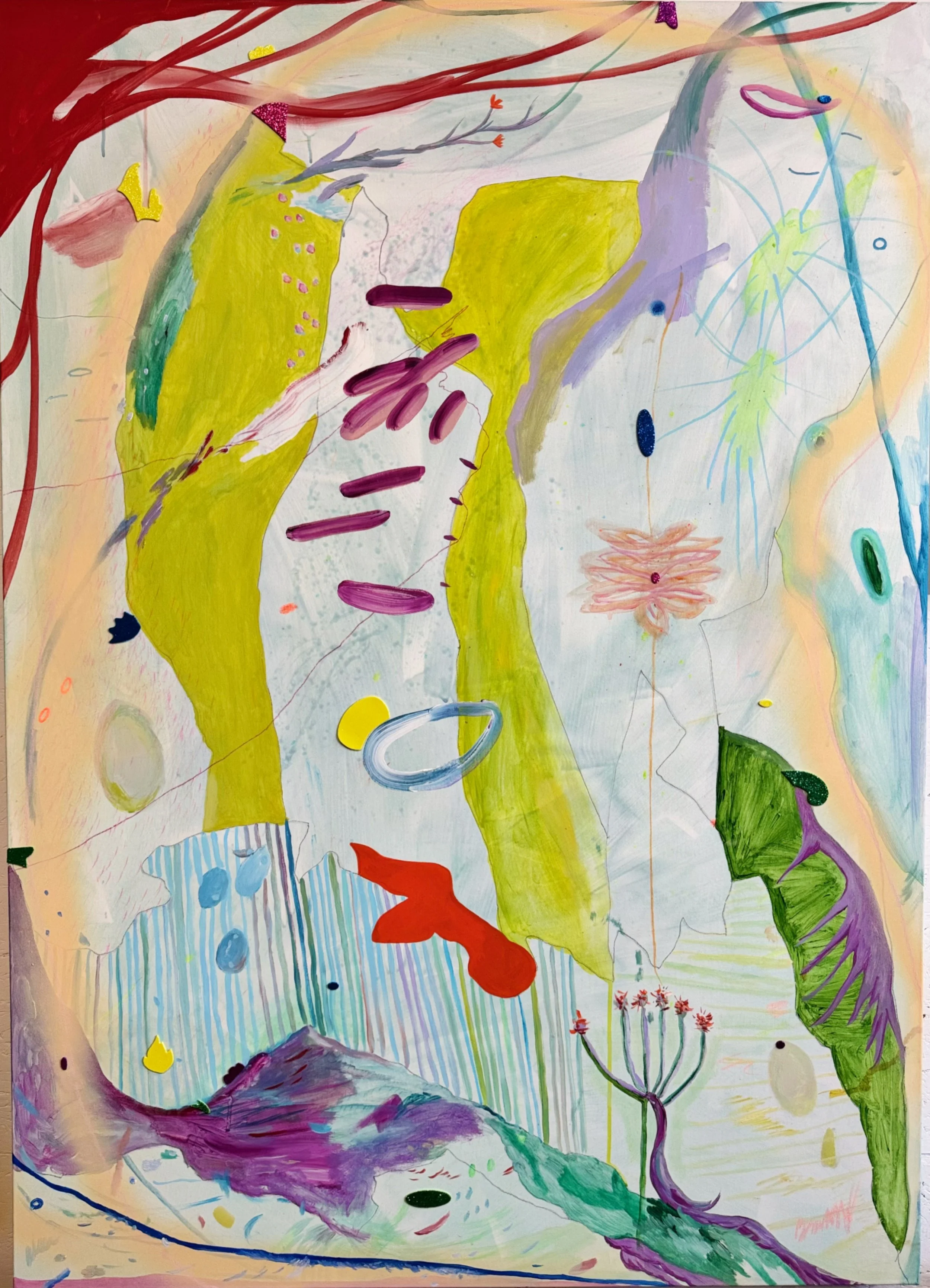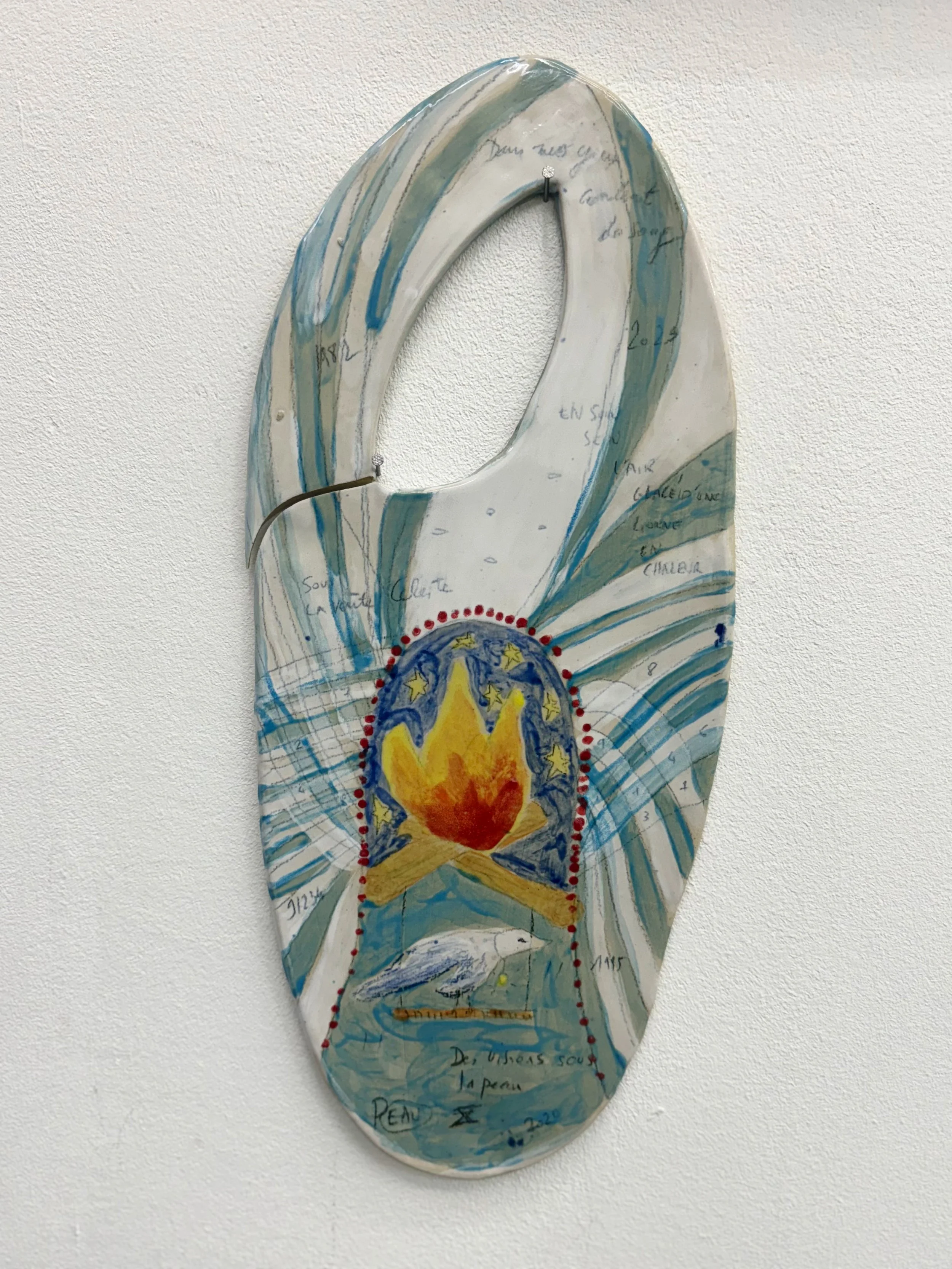An Interview With Sophie Bosselut
Sophie Bosselut is a French visual artist based in Switzerland whose abstract expressionist work is rooted in fantasy and the organic world. She explores the living through painting and drawing, embracing chance and the processes of change. Her work, characterized by thwarted graphics and underlying expressionism, plays with energetic contrasts, seeking the origin of disturbance through color and tremors, resulting in a universe of endless storms and emergences.
Can you tell us a little bit about you?
My name is Sophie Bosselut, I'm a French artist, born in Toulouse in 1982, who lives and work now in Switzerland. I have a diverse artistic practice and like to explore new mediums according to the subjects on which I work. At the moment I mainly practice drawing, painting and ceramics. My work takes root in the field of expressionism abstract : coloured by fantasy, in a poetic and organic world where biology, nature, abyssal world, space and micro universe are always in transformation. I did Fine Art School and National School of Décoratives Arts in Paris (ENSAD) where I was specialized in Art Video and Photo. I also studied Morphogenesis at the Beaux-Arts in Paris and this experience has deeply nourished my view of the world. Music, film, spirituality, dreams, nature, reading, cooking are landmarks and inspirations in my life. I have the chance to live in a rather wild environment, just steps from the forest where I love to walk and also to return in my south of France regularly to contemplate the Mediterannée sea and its mountains. I grew up between two totally different and inspiring family branches, on the one hand biologists, pharmacists, politicians, lawyers and on the other, Circassian magicians, mediums, healers...I have a taste of contrast in life quite pronounced and art allows me to express these antipodes!
How do your experiences in filmmaking translate into your paintings and drawings? Are there any specific techniques or approaches that you share between the two mediums?
The creative processes of video and painting are different yet these two arts allow me to work on several notions that are essential for me to know "time" and "movement", but also on who could be the very definition of the concept of "ellipse" specific to the world of cinema - namely to try to capture what we miss: the invisible. I started experimenting with video language when I was at Fine Arts where I drew or painted a lot as well. I then trained and specialized in video art at the Arts Décoratifs de Paris. It’s a decade during which I almost did not paint at all, but there was always the question for me to compose something in the way of a poet or an abstract painter working with a lot of different fittings. The palettes are different, but the lexical field of these two practices is quite similar: arranging spaces, creating contrasts, playing with solids and voids, silences, ordering things, there is a lot of intuition. In painting as in video and films this is always a question of rhythm, touches, colors, emotions, movement and dreams... It’s not for nothing I think many filmmakers are painters and vice versa. David Lynch, Maurice Pialat, Julian Schnabel, Cocteau... Sound and music is also a common driver in the creating process of both medium for me.
Can you describe how you visually represent 'the processes of transformation' in your paintings and drawings? What techniques or materials do you use to capture this sense of constant change?
Painting is a strange thing. It is frozen, in 2D, and all the painters give a hard time to make it alive and this is why painting is so fascinating. I often use the principle of "exquisite corpse" and the "automatic writing", painting and drawing in my work as surrealist artists did in the past. It allows me to work instinctively. There is something in this quest of the order of the alchemist or the mad scientist. A workshop can quickly become a laboratory where hours and time no longer exist in search of the little trick that will make this flat space deeper, larger and full of movement and details and where the viewer can travel. I like to try to achieve this using all kinds of mediums, spray, oil paint, pastel, watercolor, remnants of old palettes and make up... There are no limits for exploration in order to get every special texture or discover amazing colors. There is technique, control, precision, but also a lot of luck and craziness. I'm working with many layers, different gestures and dynamics to create deepness in the picture.
How do lines function in your work? Do they define form, suggest movement, or convey emotion?
Since 20 years I create, I always liked to use lines and colors with their own energy ; some lines are there to shred, scratch, they respond to the unconscious and to a physical force. They allow the eyes to dance. Others are there to define, circumvent, crop... These are used in a need for control or for narrative. I like to navigate between those opposite energies and confront them through the line and the colors.. .This creates a tension between sweetness and violence, darkness and joy, dream and reality, harmony and disharmony. For me, the whole pleasure of painting is to be able to use the accumulation of layers and "pentimento". What do I reveal? What do I hide? What do I take out? There is something very mysterious and poetic in this practice, which leaves a lot of room for the invisible. To feed this vocabulary of lines and forms, I take a lot of pictures as a source of inspiration in the everyday life, nature and from my dreams. Patterns, details, fractals, a plant, a wallpaper, a texture, bio cells, abyssal forms, no matter when it evokes an emotion and aesthetic interest to me. Also, I listen to a lot of different music which gives me ideas of very varied lines and I dance a lot during the process. It helps me to give to the canvas different kinds of intentions and energy in my gesture. Sometimes strong, sometimes soft. Electronic, Jazz, Classical and soundtrack music are the music styles I listen the most in my studio but I love to discover some odd and psychedelic music from all over the world and from different decades to enrich this vocabulary. This gives me the feeling of being creating a cinema, a canvas, always in motion. In this respect I feel close to Vassily Kandinsky and his synaesthesia where when he hears a sound, he sees a color or a movement. Everything is dance, vibration and emotion.
What does 'Abstraction' mean to you?
Abstraction means freedom and a space of dreams for me! It allows me to absolve myself from what is representable. It means listening to your own inner vocabulary and allowing new ramifications that one would not always dare to represent an image. It is to be in infinite awareness of time and of what inhabits you. Abstraction means to accept to work with some invisible elements. Even when I work with existing forms for example during drawing practice, they become abstract because they are not at the service of a story…but a vision! It's through constant research and empiricism that I can find sometimes many solutions and ways to represent the real and the unreal. Abstraction means to me that I can mix and match things apparently different allowing me to travel and explore inner worlds.. For example when I'm drawing, I'm dreaming or writing poetry, when I paint, I think sculpture and 3D, when I'm filming, I'm dancing with my camera. Abstract painting in my opinion allows us to propose to people not something known or something they can recognize, but to provoke revelations and emotions. This is all the beauty of abstract art. These are wonderful doors for seeing world differently, a world of the perceptible.
What are some of the biggest challenges you've faced as an artist and how have your overcome them?
I have encountered several challenges in recent years as an artist. I became a mother and moved from Paris to Lausanne the same year. I ran out of time after my son was born to create, but I decided to take advantage of his naps to make a series of cathartic drawings that I called “Naps.” By changing countries it took me some time to find a new studio but thanks to the network of my art school I could find, after a couple of years, a studio within artists' studios in Lausanne. It also took me some time to be part of the Swiss artistic community and make myself known. I was also able to start my own business.
Your earliest memory of art?
I am a child, 7 or 8 years old and my father who loves art viscerally drags me from gallery to gallery in Toulouse in France during the week ends. Of course I didn't understood anything I saw, I used to pull his arm constantly "Dad, I’m tired of these doodles, when are we leaving"? I can’t thank him enough for having annoyed me so much as a child, I was lucky to be able to build my look early on thanks to him. I fell asleep many times in front of scary paintings of abstract art. One of them was a very big canvas where a kind of big black hole was in front of my bed. These very strong paintings and many others have built my imagination as a child and adult today. And now, I’m the one who makes doodles and I take my 7 year old son!
Are there any specific artists, filmmakers, or writers who have significantly influenced your work?
This kind of question is always very difficult to answer because the people who inspire us evolve at the same time as our work evolves but I can tell you that I had very strong emotions younger with the work of Bill Viola, Pipilotti Rist, regarding the art video. In cinema, one of the things that touches and inspires me the most is its strange appearance and when pictures are built like painting ; Dario Argento, David Lynch, Murnau, Antonioni, Fellini, Jodorowski... Since my 20's I love the energy of many painters as Albert Oehlen, Joanne Mitchell, De Kooning, Hans Hartung, Helen Frankhenthaler, Bacon, Munch, Cy Twombly, and for sure Kandinsky. Also the notion of empty and fullness in the work of Chu Teh Chun and Zao Wou ki are important for me. I was in Paris this month and saw the last Centre Pompidou exhibition for the 100th anniversary of surrealism and rediscover many artist which I knew younger and realized the strong impact this movement and his poetry has on my vision of the world. Especially Andre Masson and his labyrinthic way to see our soul and body and Max Ernst for all his abstract mysteries. Lastly, a strong aesthetic shock was also to walk in the spaces and works of James Turrell. This was at the dawn of figuring out the color not only in a palette mindset but also as an immersive experience.
What is your favourite book or film and why?
2001 Space Odyssey (1968), by Stanley Kubrick, for me it is a film of total art. The music of Ligéti, Strauss, the work on colour which is impressive. The visionary and spiritual aspect of the film. It is very slow, but it’s a real journey and I can recheck it from time to time if I still feel so many emotions, especially the "Starget Sequence" which is a kind of beautiful and strange abstract painting. The questions he poses are all very topical...the birth of life and its bacteria, the first tools, AI, transcendental travels, the almost unstoppable future...a real masterpiece ! I'm a big fan of all the Lynch movies and Twin Peaks. The ambiguity, the strange part of the life. All is a masterpiece on his work. "I see well only when working" Giacometti and “ On spirituality in Art” from Vassily Kandinsky are the book I always have in my studio. "Le Nuvolaire" from Fosco Maraini about the infinite beauty of clouds is my bedside book.
Are you working on any projects you are particularly excited about?
I just finished a group exhibition in Paris about Hypersensitivity and worked on a big canvas for that and this gave me motivation to continue to explore more inner-landscapes on big canvas with oil painting. Also, I want to continue to produce ceramics pieces! I'm in love with this medium. This year, I would like to do a new artistic residency.
Sophie Bosselut - Instagram
Sophie Bosselut - Website

